The Charm of Bruges
Bruges, Belgium
This was my first visit to Belgium, and since I’m more naturally attracted to small towns, Bruges was a natural choice. I was somewhat apprehensive of the amount of walking that I would need to do when visiting Bruges; over the past year the arthritis in my left knee became much worse and I was concerned how it would limit my exploration and photography. However, I just went ahead with plans and expected that I would somehow make “it work.”
I arrived via train from Brussels, and naturally, I chose to walk to my hotel, the Hotel Ter Brughe, about 2.5km from the station. I had specifically chosen this hotel, as it was on the canal, within a short walk of the historic Markt, and in a historic building (1511). My intended path would take down several streets, through alleyways, the Markt ("Market Square"), and finally over the canal. The day I arrived was a bit cool, but sunny and partly cloudy; a welcome relief coming from the heat of the Arizona desert.
Initial Impressions
The charm of Bruges became evident as I walked, passing charming Flemish gable-roofed houses fronting narrow cobblestone streets, with narrow sidewalks and the occasional narrow alleyway. I quickly noticed the brightly colored windows and doorways that I passed, and as I would later see on a gloomy day, the colors lifted the mood of the area, making it less gloomy.
The first thing I noticed as I came into town was the prevalence of bicycles. I had never been to Belgium before, and while bicycle use isn’t as prevalent in Germany where I’ve spent most of my time in Europe, I didn’t expect how prevalent they would be. I saw a woman with her child behind her and groceries in the carrying cart mounted on the back of the bicycle ride past, an old man, groceries in one hand, steering with other. Some people were riding fast, as if on the way to work, others slowly enjoying the ride. I thought that this would be simpler way to live.
The town, and it’s pace of life, apart from the more touristy areas, was just what I was seeking; quiet, not hurried or rushed to get anywhere, with an obvious enjoyment of life. I watched the school children laugh and frolic on their way to school, obviously enjoying the morning. There were few cars, instead people rode bicycles. They sat in the parks, strolled along the canals, enjoying a simpler life.
Chocolate Shops
Shops selling chocolate are everywhere here, and not just on the corners, but literally lined up one after another. Given Belgium’s long history with chocolate and the love affair most people have with chocolate, that’s not surprising. Many shops had signs indicating the chocolates where made in the store, imparting a sense of the homemade to their product, others seem to be chain stores with the same products as their other stores. Chocolates were of various shapes, sizes and design; more than I could even imagine existed. I even found chocolates in the shape of, and looking somewhat like rusted tools in several stores.
Chocolate has been a major industry in Belgium since the 19th century, and today it forms an important part of the nation's economy and culture. However, the raw materials used in chocolate production do not originate in Belgium; most cocoa is produced in Africa, central America, and south America. Nevertheless, the country has had an association with the product that dates to the early 17th century. While the industry has been regulated by law since 1894, there is no universal standard for the chocolate to be labelled "Belgian". The most commonly accepted standard dictates that the actual production must take place inside Belgium.
Architecture and Canals
The architecture in Bruges is is one the aspects of the town that sets it apart from other European cities (not to diminish the role of chocolate!!). In many cases, you can walk down a cobblestone street fronted with medieval building fronts, over a canal bridge or two, past unique sculptures to turn the corner and be in the presence of a magnificent palace or church. Not surprisingly, Bruges is considered to have the most intact medieval city area of any in Europe and has a UNESCO designation as a result.
The city has multiple canals running through it, waterways which stretch to the nearby sea and give it a nickname of “Venice of the North”, although I’m sure the people in Amsterdam may dispute that. On some of the canals, boat tours are offered, and from what I’ve seen are very popular, going from the city center towards Minnewater Park.
The canals are lined with medieval buildings, parks, and you can see the occasional swan gracing the waterfront or swimming nearby (In 1488, Maximilian of Austria was imprisoned by the citizens of Bruges, and his adviser beheaded. When Maximilian was freed, he ordered Bruges to keep swans in its canals in perpetuity as a punishment for the crime of imprisoning him).
The Markt
At the very heart of the city is the Markt, Bruges bustling main square and seemingly the focus of most visitors. The Markt is anchored on one side by the 12th-century belfry and the West Flanders Provincial Court, with rows of fine restaurants on the other. With a history as a marketplace, stretching back to 985, it’s not surprising that it serves as a meeting place for locals, or the beginning of a walking tour of the city. If walking is too much, it’s easy to catch a horse and carriage here.
The square is bustling with pedestrians, bicyclists and dinners looking for a fine meal.
The statues at the center of the square are of Jan Breydel and Pieter de Coninck, two freedom heroes in the struggle against the French at the beginning of the 14th century.
Finally ...
This was my first trip to Bruges, of which I hope there to be more to come in the future. My struggles with a bad knee on this trip kept me from seeing some of the locations I had intended to visit, and most disappointingly, kept me from the planned city lights photography outing I had planned, but what I was seeking most, a small town atmosphere in an architecturally rich area matched my expectations.
In spite of this, I reveled in the architecture of the city, the slower pace of life (at least for the locals) and the solitude of sitting on a bench near a quiet canal. I didn’t get to try any of the fine restaurants, instead settling for vendor prepared Belgian Waffles, or French Fries (both of which are very popular here). For this reason alone, I’m sure I’ll return on a future trip.
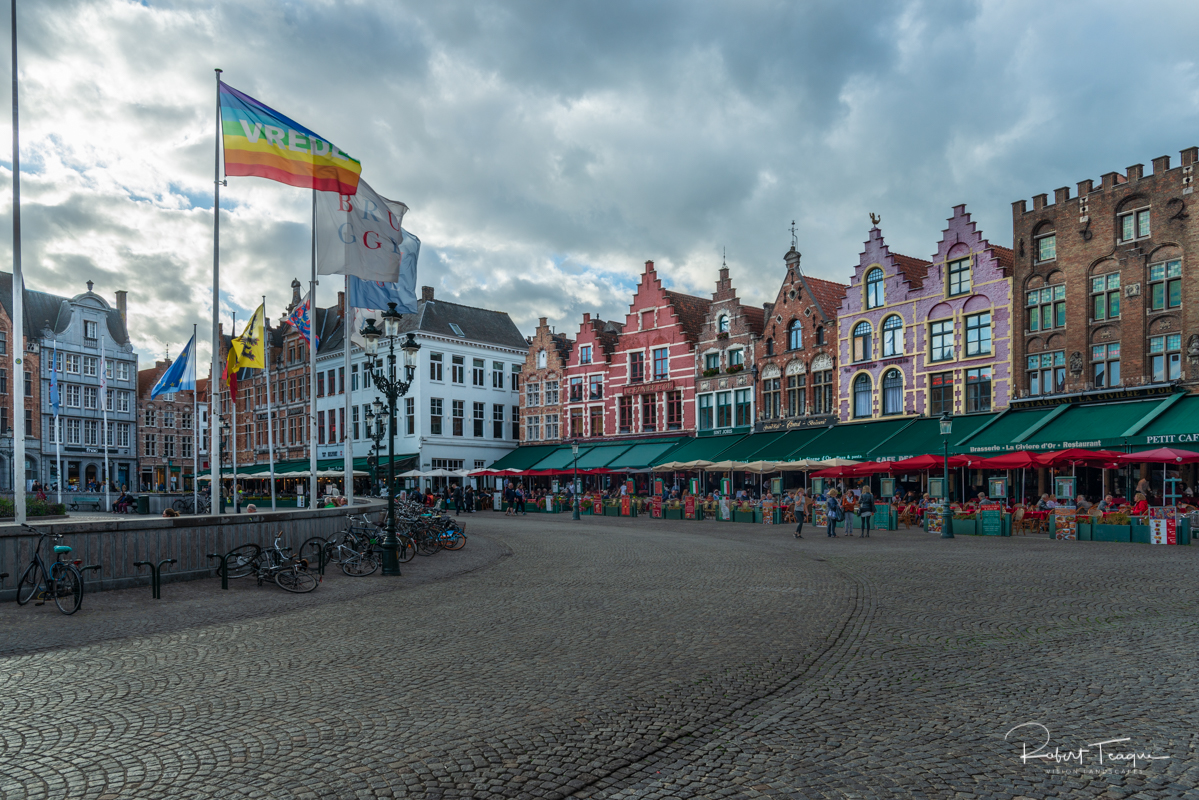
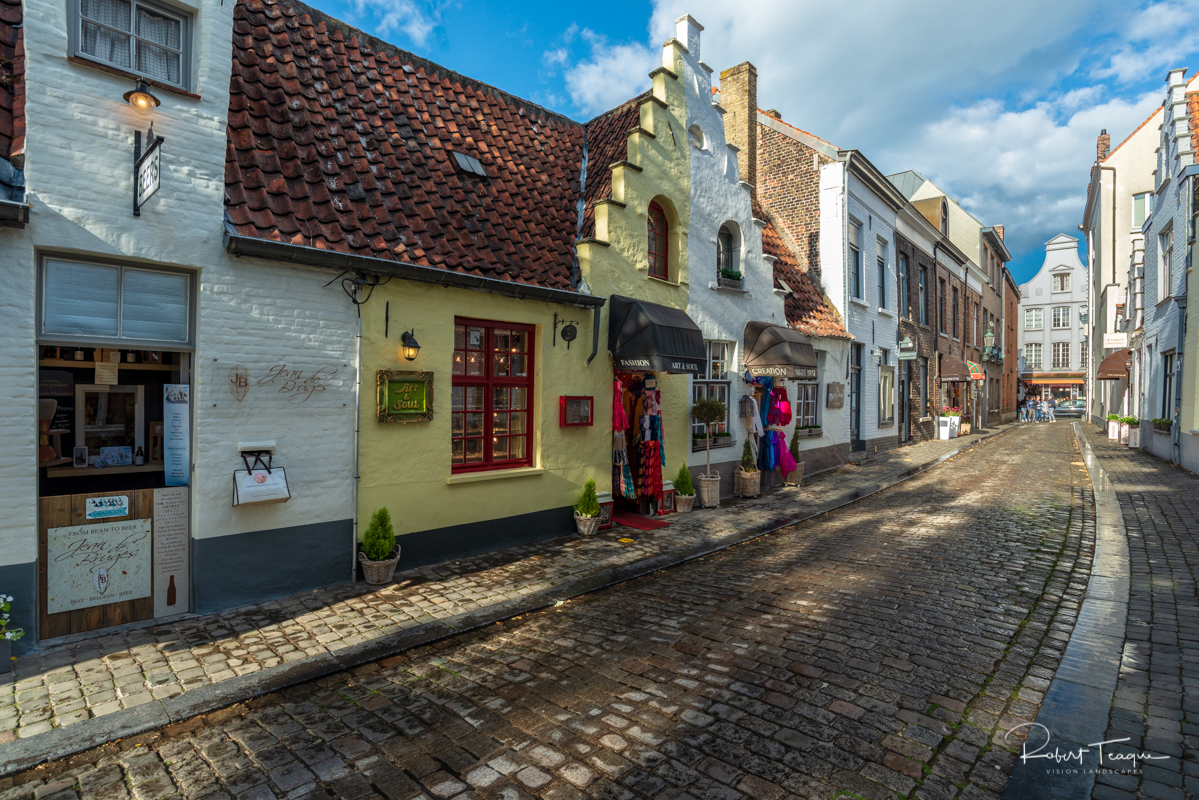
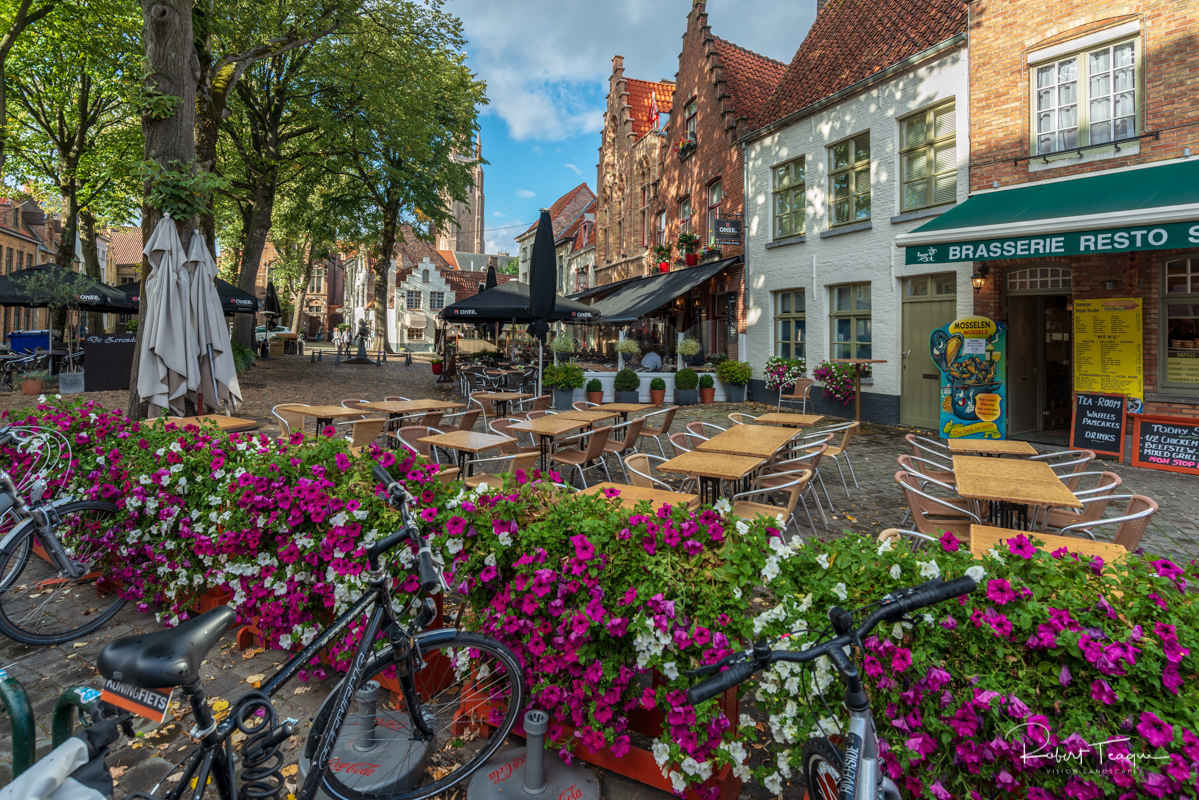
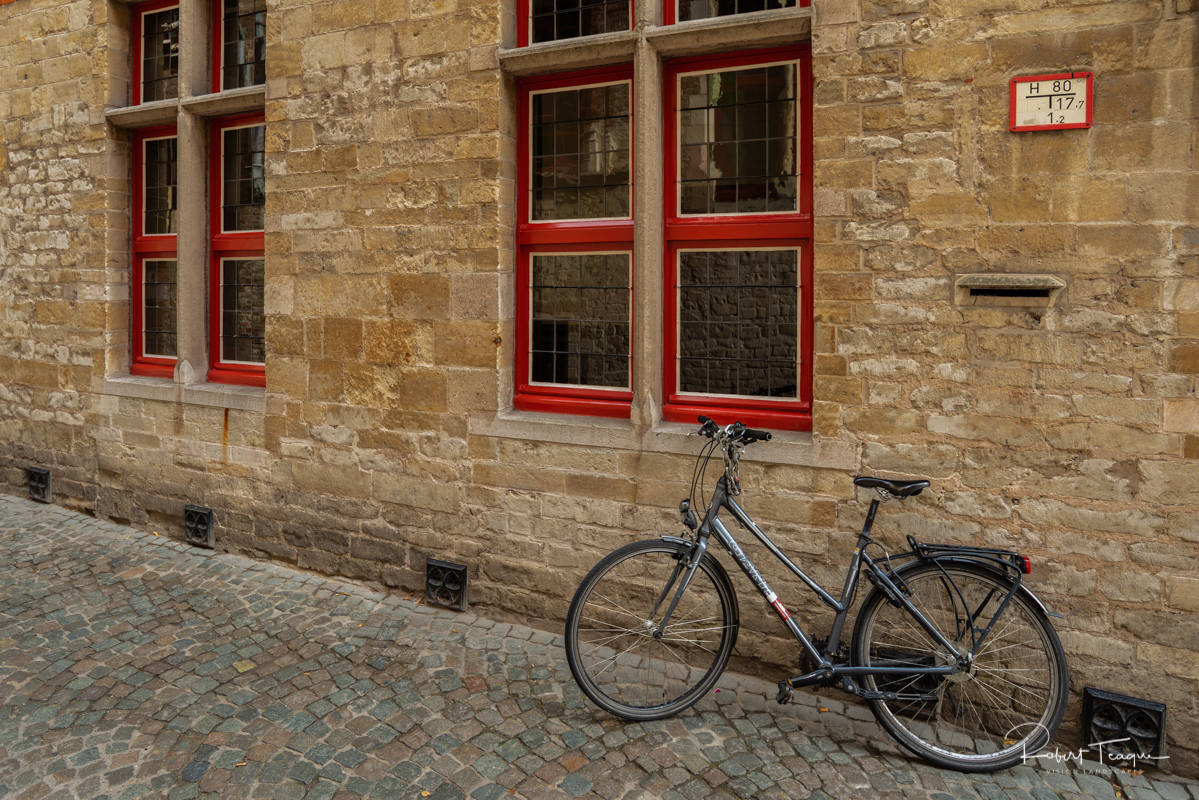
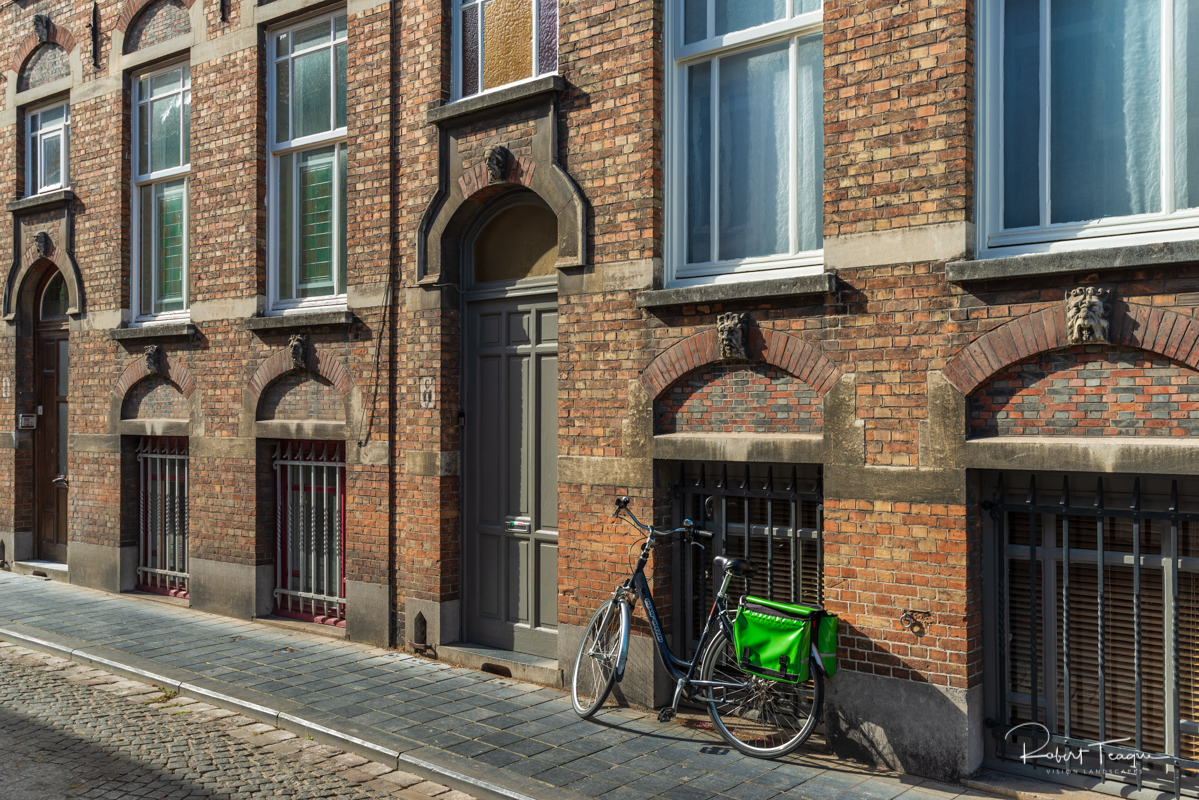
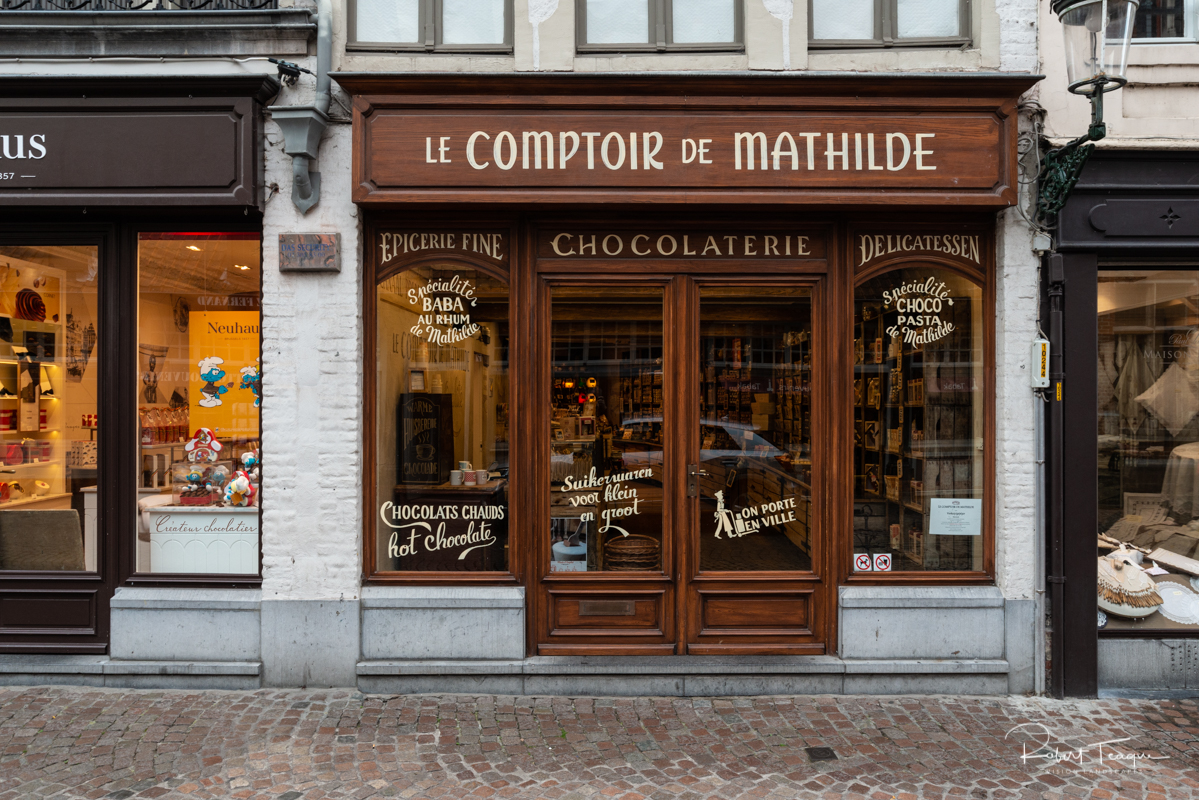
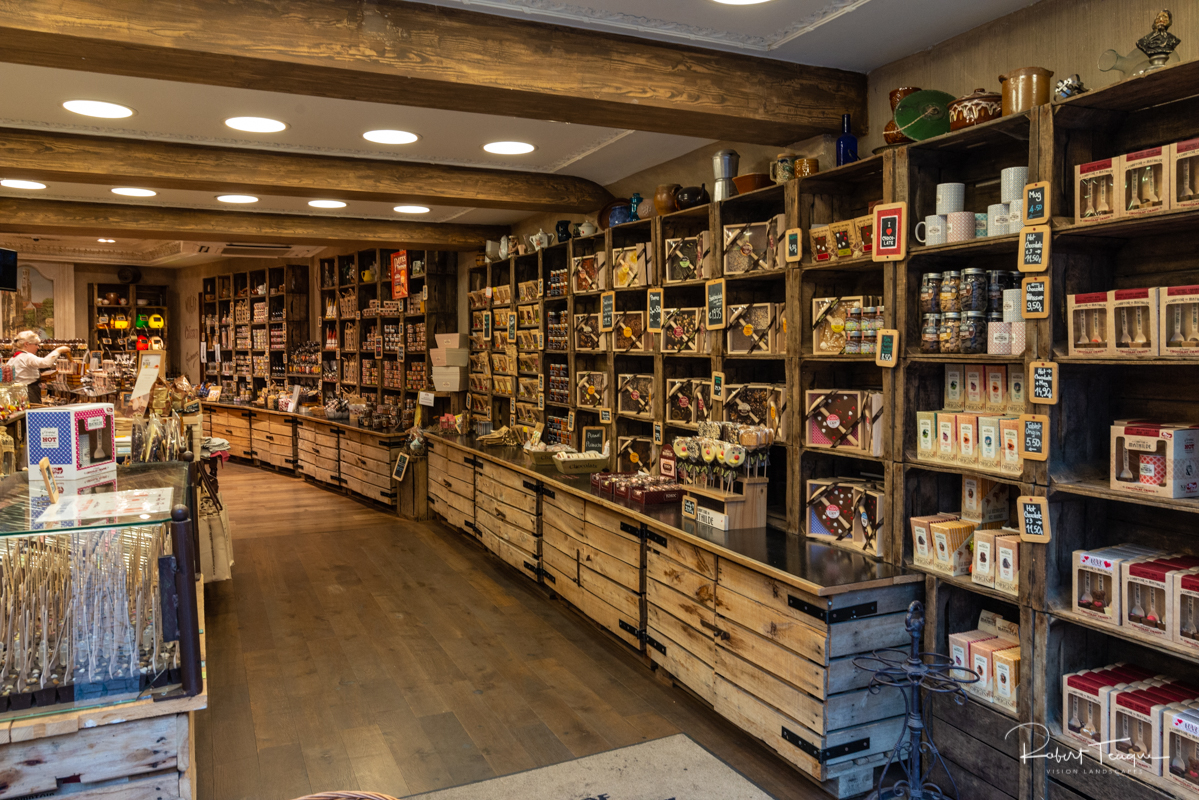
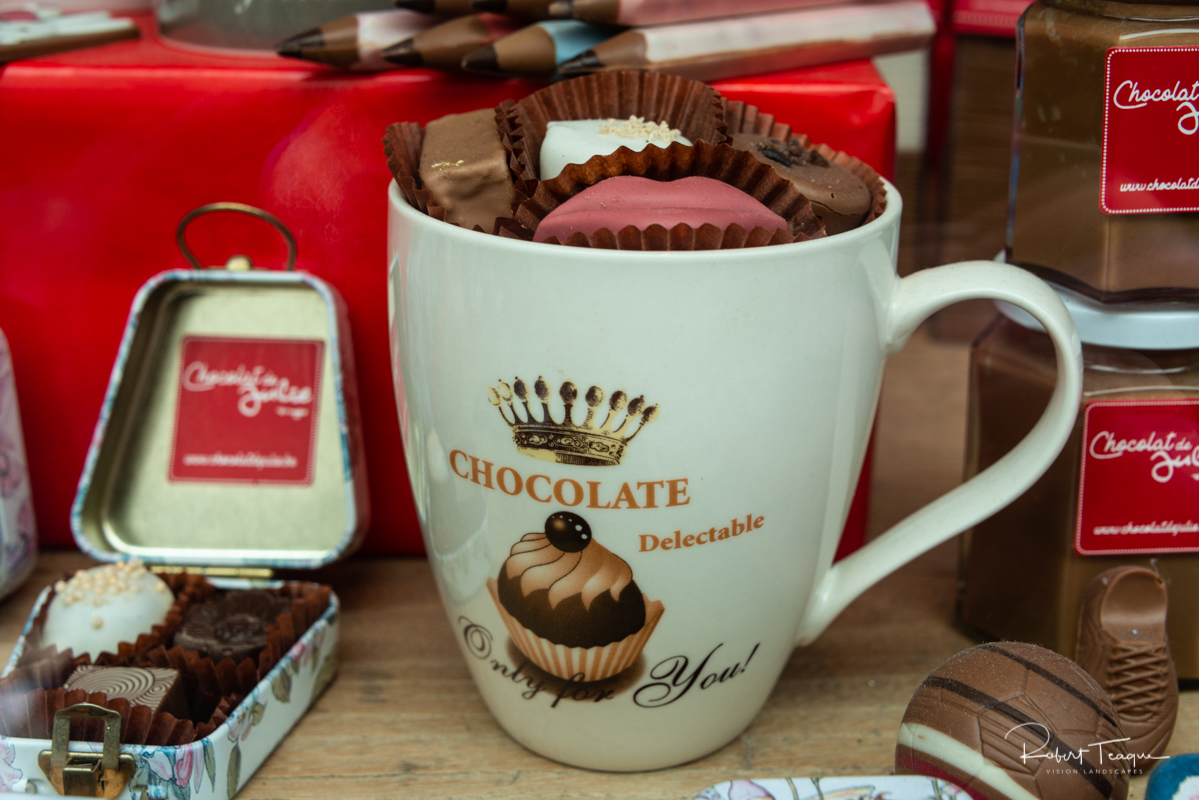
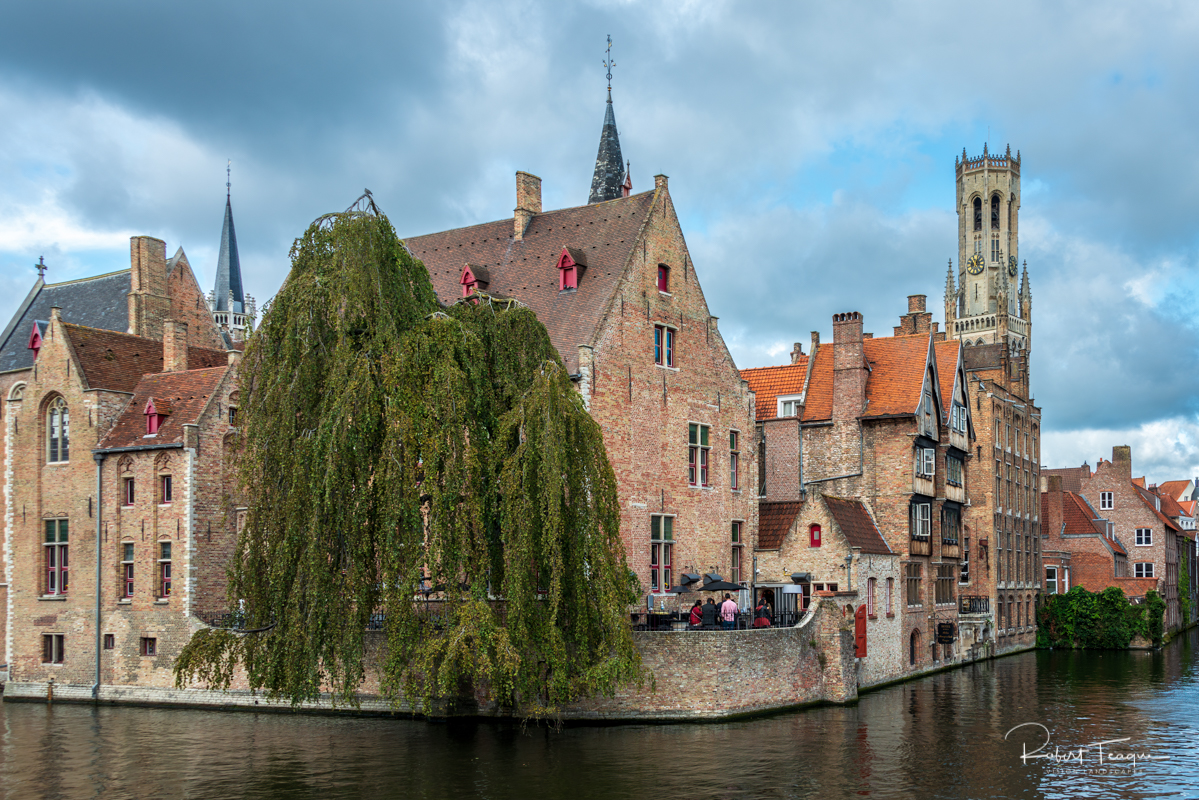
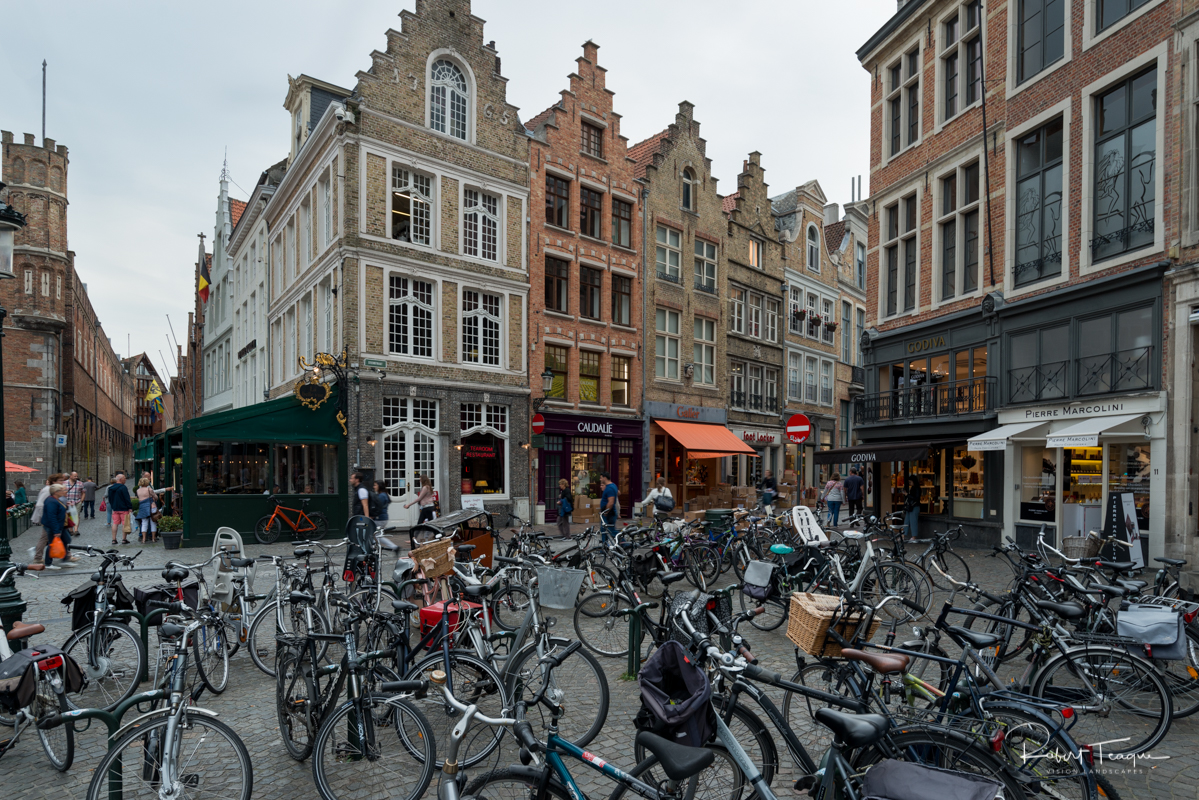
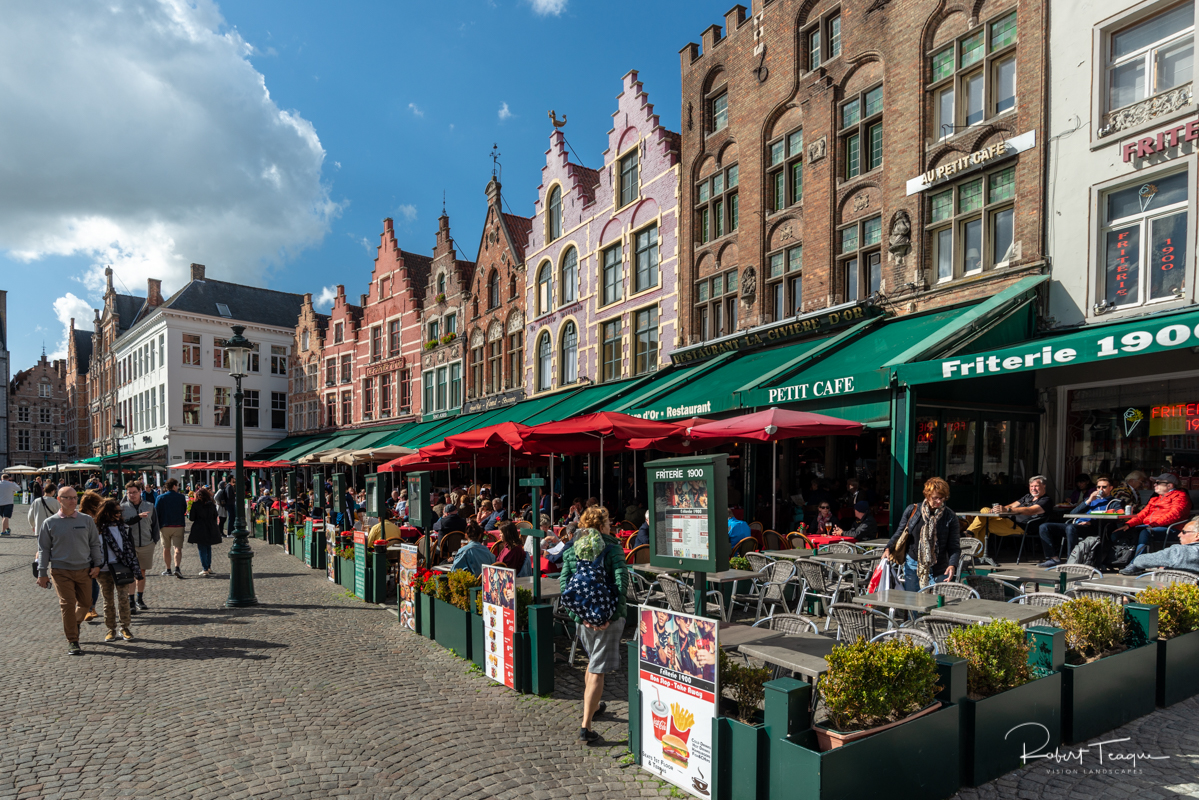
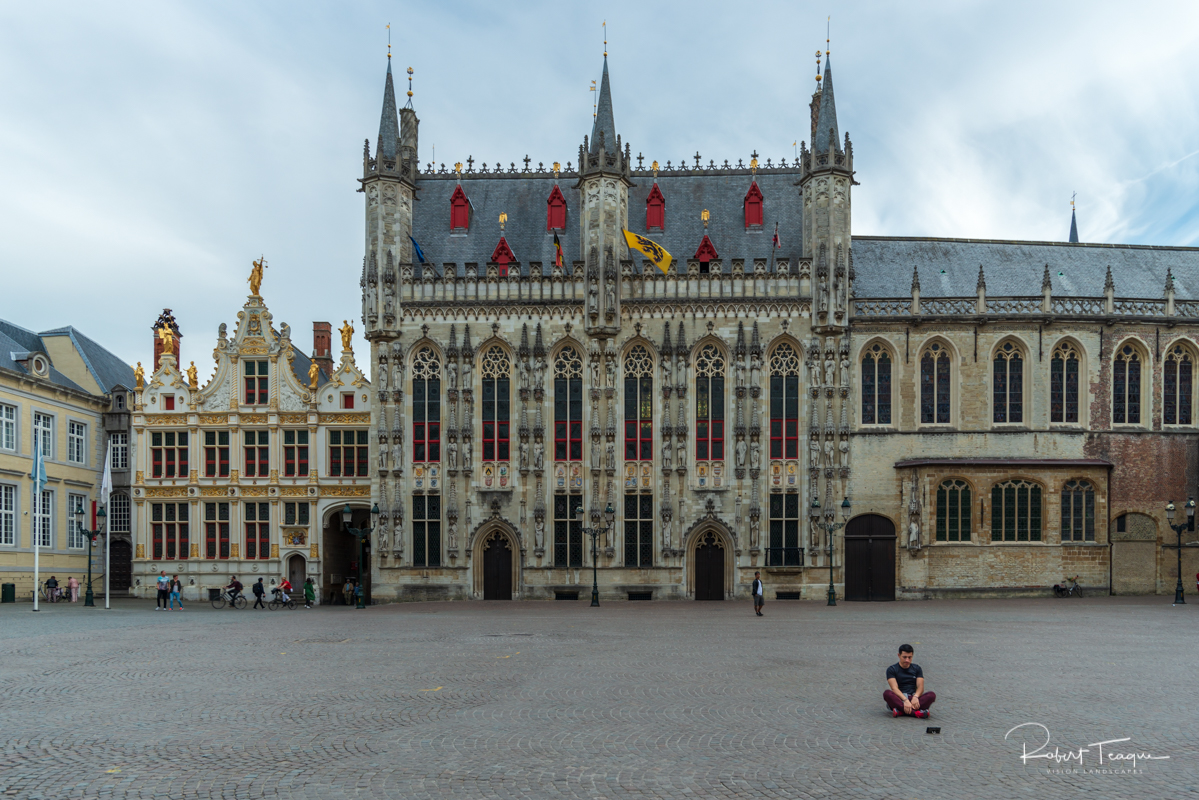

0 Comments on "The Charm of Bruges"